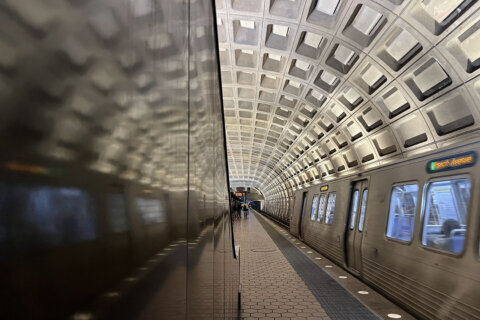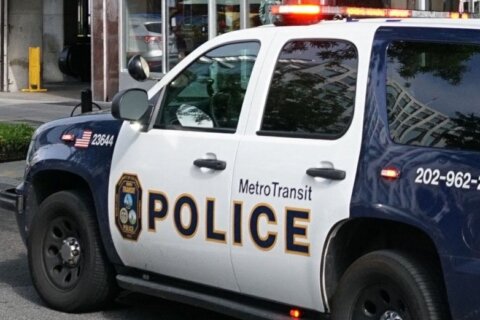Metro said the ongoing inspections of the 7000 Series rail cars after a derailment last week mean continued extensive delays across the system for the rest of the week. For commuters, that means anyone not riding the Red Line will be subject to waits as long as 30 minutes for the next train.
The hope is that the inspection process is completed and the fixes that need to be made are all wrapped up by the end of the weekend.
But what if it isn’t?
In this situation, it’s too early to say with any certainty that this will be a one-week blip for the transit system.
“It could be that we’re back to normal next Monday, or somewhere near normal, but it could be that it’s months or years until they can replace or repair” everything, said Salim Furth, a senior research fellow at the Mercatus Center at George Mason University. “I don’t think that it’s going to be years until Metro comes back, but it could be and we shouldn’t wait to find out if it’s really bad.”
Furth recently wrote about the need for worst-case scenario planning in a commentary titled, “DC Metro’s Derailment: Act Now, Don’t Wait.”
Another element of uncertainty is that with the 7000 Series rail cars — which make up 60% of Metro’s fleet — sidelined, the transit system is relying on its oldest rail fleet to provide all the service.
Furth argues now is the time for government and employers to start planning for the worst.
“Planning here is hard because there are so many jurisdictions,” said Furth, noting the different counties and cities that feed into downtown D.C., which also involves locally controlled and federally controlled land. “You’re going to need everyone’s buy-in.”
While nothing is necessarily easy and everything is probably subject to some degree of tradeoff, a quick and flexible solution could be bus-only lanes feeding people into the downtown core, Furth said.
His vision is allowing everything from Metrobus or even a RideOn bus, but also private buses, to have a dedicated lane along 16th Street or Georgia Avenue from Silver Spring, Maryland, heading into downtown D.C. Another option is a bus-only lane along Wilson Boulevard through Arlington into downtown D.C.
Even that may not be perfect, “but the reality is a car lane moves something like a thousand people per hour and an express bus lane that’s well used can move 4,000-8,000 people per hour,” he argued. “That’s a far more efficient way to move people downtown.”
Furth said it’s time now for local governments to start coming together on a variety of ideas that can help transport people in new ways beyond seeing everyone retreat to their cars. And in some cases, it might mean keeping people home from the get-go.
The Office of Personnel Management “needs to start thinking about what to do with the federal workforce if commutes are all much worse,” he said. “Are they going to move to pandemic levels of work from home? They’ve got to start thinking about that now and not treat this as, ‘Oh it’s one or two days where the Metro is really bad,’ …This isn’t just a problem that we know is going to get solved in a day or two.”
And your decision about how you or your company should proceed will have a bigger impact beyond your own office.
“It’s just really important to take into account that not everyone can say, ‘Oh yeah, the Metro is bad today well I guess I’m working from home,'” said Furth. “It’s just not an option. We need all of those people to make our city run.”
Of course, if in the end his doomsday warnings about worst-case scenarios aren’t proven true, Furth won’t be too upset and it won’t be a huge loss for anyone else either.
“Great, you wasted some time planning,” he said. But with uncertainty still in the air, he said he worries “people aren’t taking this as seriously as they would if it was affecting them directly. There’s a lot of people in the commentariat who drive the dialogue who aren’t affected by this.”
Many others don’t have that luxury, he said.







